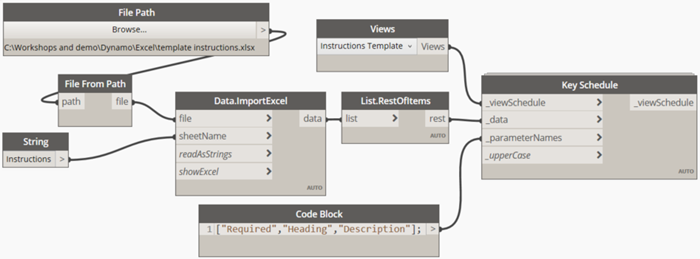Seamlessly Import Excel into Revit: Boost Your Effectiveness
Wiki Article
Mastering the Art of Information Integration: Exactly How to Seamlessly Import Excel Record Into Revit
In this post, we will certainly lead you via the procedure of mastering the art of data integration. Get prepared to prepare your Excel information easily and follow our detailed overview to import data into Revit. With our finest methods, you'll accomplish information combination success in no time.Comprehending the Value of Data Combination in Revit
Comprehending the significance of data combination in Revit is essential for seamless importing of Excel files. When you integrate information from Excel right into Revit, it permits you to successfully upgrade and handle information throughout the entire job. This integration makes sure that your style and construction process is accurate and updated.By incorporating information, you can quickly import and upgrade specifications, timetables, and also geometry in Revit. This eliminates the need for hand-operated data entry, conserving you time and lowering the threat of errors. With Revit's information assimilation capabilities, you can preserve uniformity and precision in your project, while additionally enhancing cooperation among employee.

Exploring the Excel File Format for Revit Integration

In order to successfully incorporate Excel data into Revit, it is crucial to make certain that the data is formatted correctly. This consists of appropriately labeling rows and columns, in addition to structuring the data in a manner that works with Revit's information schema. Revit utilizes specific criteria and categories to arrange data, so it is necessary to line up the Excel data with these specifications to ensure a smooth integration.
In addition, it is essential to keep in mind that Revit only sustains certain information types when importing from Excel. These include message, numbers, and dates. Any kind of other information kinds, such as formulas or conditional format, will not be acknowledged by Revit and may trigger concerns during the combination process.
Preparing Your Excel Data for Seamless Import Into Revit
To ensure a smooth combination procedure, you'll require to correctly format and tag the columns and rows in your Excel information before importing it into Revit. Start by examining your Excel data and identifying which columns and rows include appropriate info for your Revit job.Next, make sure that the data in each column is properly formatted. If you have a column for measurements, make certain that all revit tool dimensions are regularly formatted in the same units of dimension. Revit counts on regular format to precisely interpret and import data.
In addition, it is necessary to look for any type of empty cells or inconsistencies in your information. Revit might not be able to read or import information from cells that are vacant or include errors. Therefore, it is advised to examine your Excel data and cleanse up any kind of variances before importing it right into Revit.
Step-By-Step Overview to Importing Excel Info Into Revit
When you've correctly formatted and labeled your Excel information, you can easily import it right into Revit by following this detailed guide. To start, open Revit and navigate to the "Insert" tab. revit plugins.Following, a dialog box will show up, permitting you to personalize the import setups. Here, you can select the worksheet you intend to import, specify the series of cells to import, and select the suitable devices for your data. When you have actually made your selections, click "OK" to continue.
Revit will certainly currently display a sneak peek of your Excel information. Take a moment to guarantee and assess the sneak peek that everything looks right. If required, you can make adjustments to the import settings by clicking on the "Setups" switch.
Ideal Practices for Data Combination Success in Revit
Make sure you follow these best practices to ensure effective assimilation of information in Revit. It is vital to organize your data in Excel before importing it right into Revit. Be conscious of the systems and data kinds when mapping the information, as any type of inconsistencies can lead to errors in the assimilation procedure.An additional crucial practice is to routinely validate and upgrade your information. As your project progresses, it is important to maintain your Excel file up to day with any type of changes made in Revit. This will certainly assist preserve the precision and uniformity of your data throughout both platforms. In addition, utilize data recognition tools within Revit to identify any type of errors or incongruities in the integrated data.
Lastly, it is advised to establish a clear operations for information combination. This consists of defining duties and obligations, establishing a communication network in between staff member, and establishing a routine tempo for data updates and evaluations. By adhering to these finest methods, you can ensure a smooth and successful assimilation of information in Revit, ultimately boosting the performance and accuracy of your project.
Verdict
In verdict, understanding the art of information combination is vital for smooth import of Excel submits right into Revit. Comprehending the significance of data integration in Revit is the first step towards effective assimilation.When importing information from Excel right into Revit, it is essential to understand the file format and how it can affect the assimilation procedure (revit add ins). Revit uses details criteria and classifications to organize data, so it is important to straighten the Excel information with these parameters to ensure a smooth combination
Be mindful of the data and units kinds when mapping the data, as any disparities can lead to errors in the integration procedure.
Furthermore, make use of information validation tools within Revit to recognize any type of errors or incongruities in the integrated data.

Report this wiki page